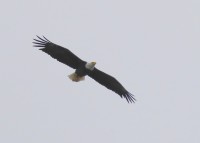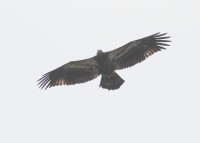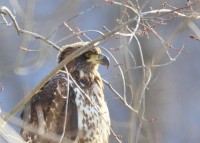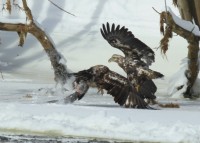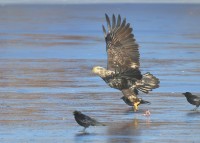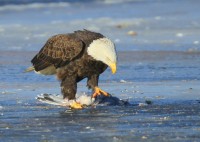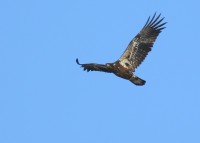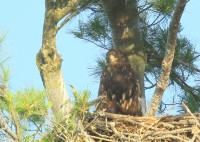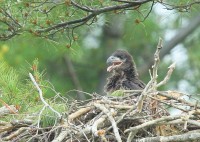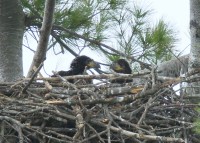Bald Eagle: Haggetts Pond subadult!
March 15, 2017 in Bald Eagle
 An unexpected treat while making a visit Haggets Pond in Andover on the west side of Rt. 93 heading north just before Rt. 495. A subadult Bald Eagle flew into a tree next to the water treatment main building with a freshly caught fish in its talons. A subadult like this one, requires further study in order to make a good guess as to the age of the Eagle!
An unexpected treat while making a visit Haggets Pond in Andover on the west side of Rt. 93 heading north just before Rt. 495. A subadult Bald Eagle flew into a tree next to the water treatment main building with a freshly caught fish in its talons. A subadult like this one, requires further study in order to make a good guess as to the age of the Eagle!
Haggetts Pond is the reservoir for the town of Andover, Massachusetts, United States. It is located in the western part of the town and also lends its name to a road. The Merrimack River is connected to the pond to add volume to the reservoir.
Each year, Andover’s water treatment plant pumps and treats 2.2 billion gallons of water from Haggetts Pond which is fed from the Merrimack River via Fish Brook. During winter months, the town uses roughly 6 million gallons a day, but in the summer, water use doubles to 12 to 14 million as a result of lawn watering and the filling of swimming pools.
A bald eagle does not display its adult plumage until its fourth or fifth year. Until then it often find it difficult to determine the age of the young eagle. Eye color, beak color, presence of an eye stripe and the amount of white on the belly, tail and covert feathers are field marks. Each of the first four years is supposed to be distinctive.
This young and growing Bald Eagle has a buffy crown, light gray bill, brown and white mottling, white wing pits, tan eye color….all these field marks suggest a Basic II subadult!
